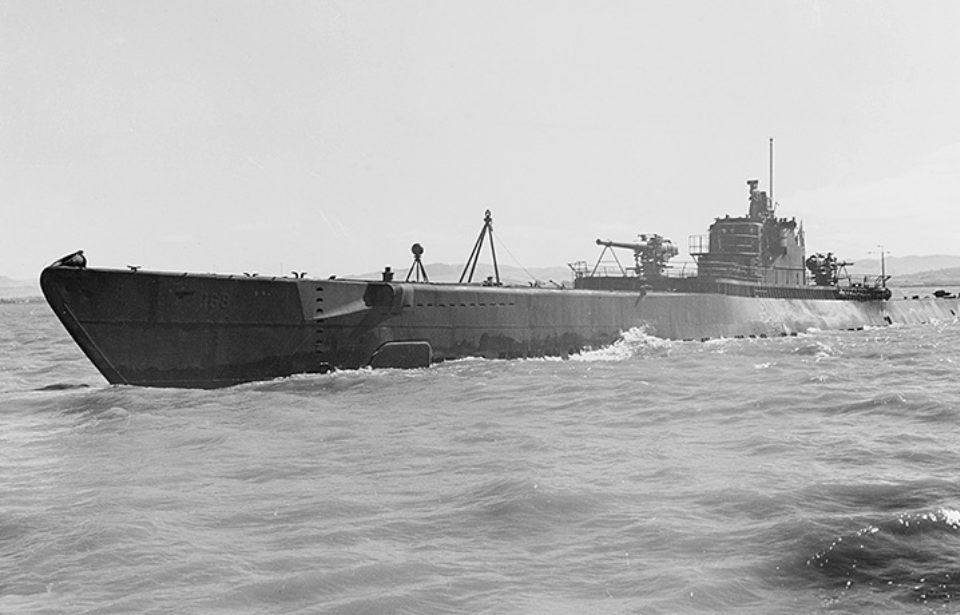
Photo Credit: US Navy / Wikimedia Commons / Public Domain
When war erupted in the Pacific, many found their homes situated in areas of conflict. There were also those who were far away from theirs, yet still in the middle of a war zone. This was the case for four American Sisters, who were in the Solomon Islands working as nurses and teachers. Rather than return Stateside, the nuns remained in the area until they received an unexpected rescue from the USS Nautilus (SS-168).
Nuns in the Pacific
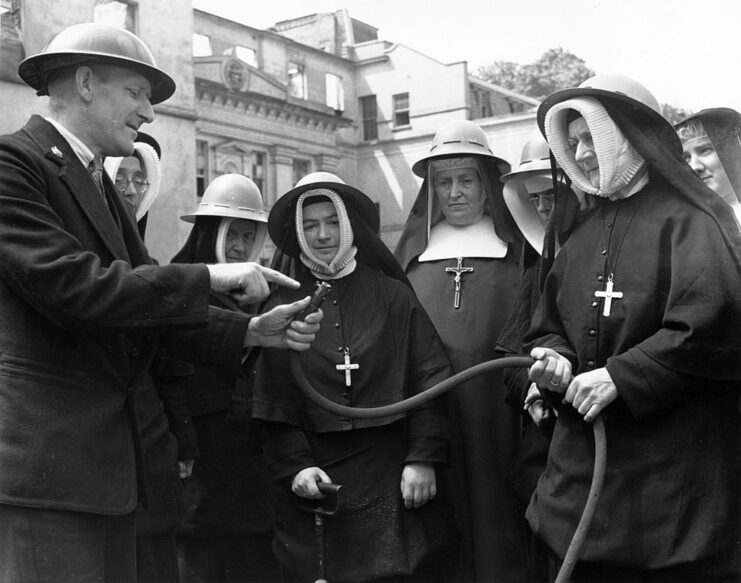
Nuns training in fire fighting and first-aid, 1942. (Photo Credit: Fred Ramage / Keystone Features / Getty Images)
The four nuns in question, one of whom was Sister Hedda Jeager, journeyed from the Sisters of St. Joseph of Orange in California in September 1940. It was a lengthy trip, first on a large passenger ship to New Zealand and Australia, followed by a smaller journey to the Solomon Islands. From Guadalcanal, they boarded a sailboat to their final destination. In total, it took them three months to arrive, coming ashore in December 1940.
There for missionary work, two of the Sisters planned to work as teachers and two as nurses. Initially, they didn’t speak any of the languages on the islands and were completely out of their depths in the jungle. However, they quickly adapted to life working in the small village of Hanahan, on Buka Island.
World War II comes knocking
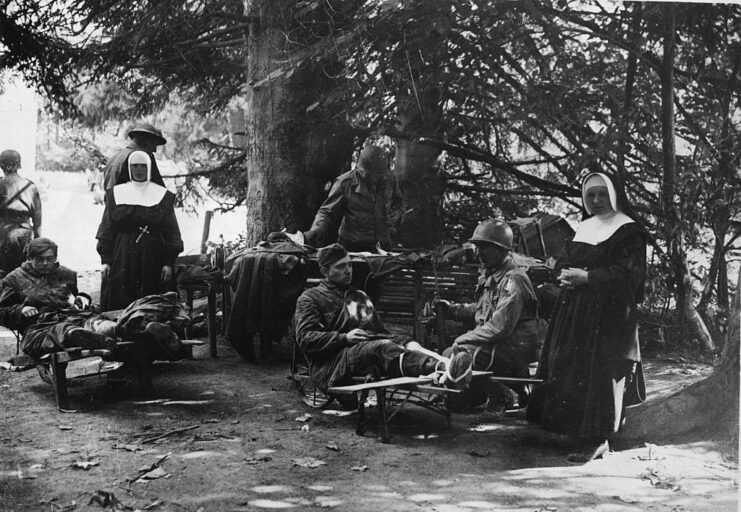
US Army Capt. Alfred Owen with wounded German soldiers placed under the care of nuns, 1944. (Photo Credit: Keystone / Getty Images)
Things took a turn when the Japanese attacked Pearl Harbor and spread their military forces throughout the South Pacific. This prompted the US government to take action. The Sisters, however, declined the initial offer for rescue, saying, “We will remain at our station.”
According to Jeager, the locals grew increasingly “concerned about [their] welfare.” This was understandable, as Japanese troops frequently captured and 𝓀𝒾𝓁𝓁ed Allied missionaries on the islands. The nuns knew this firsthand, as a Father they knew had been taken.
Eventually, things in Hanahan became too dangerous and the nuns were moved to a nearby island that would give them more jungle cover. Jeager kept a daily journal of their ordeal, which was eventually published as Trapped in Paradise: Catholic Nuns in the South Pacific 1940-1943. In it, she expressed the gravity of their situation. They all felt it wasn’t a matter of if they fell to the Japanese – it was when.
A daring rescue by the USS Nautilus (SS-168)
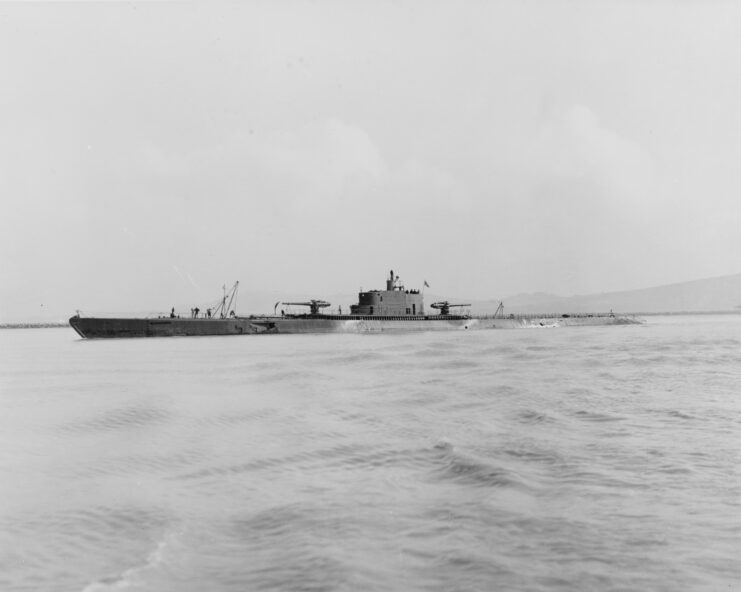
USS Nautilus (SS-168), 1942. (Photo Credit: Naval History and Heritage Command / Wikimedia Commons / Public Domain)
The time came when the four nuns simply couldn’t stay any longer, and the Americans arranged an escape for them, a handful of missionaries and some foreign workers. To get to the agreed upon meeting site, this unlikely group had to traverse through eight miles of jungle, with Jeager writing, “It was a sight to watch eight white figures with our skirts pinned up, moving slowly toward the opposite bank.”
Shortly after their arrival, roughly 500 enemy soldiers disembarked on the beach they were to leave from. The group had to bide their time until December 31, 1942, when it was finally safe for them to move. It wasn’t until they came close to the beach that the priest with them shared they were being rescued by a submarine.
The USS Nautilus, the group’s savior, surfaced on New Year’s Day. The vessel sent a crew of three to fetch them.
The USS Nautilus (SS-168) and four nuns
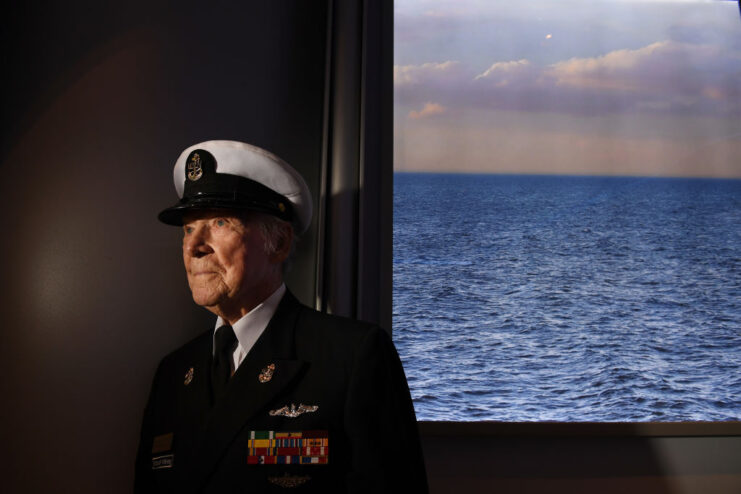
Gunner’s Mate 1st Class Hank Kudzik, a sailor who was present aboard the USS Nautilus (SS-168) when the four nuns were rescued, 2018. (Photo Credit: Matt McClain / The Washington Post / Getty Images)
According to Gunner’s Mate 1st Class Hank Kudzik, a crewman about the USS Nautilus, locals played an important role in getting the nuns and their companions to the submarine. He also reported the reaction of the Sisters upon their boarding, saying, “I think it was quite a shock to them when they saw the inside of a submarine.”
Once inside, everyone was treated to a fantastic feast of soup, fried chicken, buttered asparagus, peach pie and fruit cake – the first satisfying meal they’d had in months. The nuns spent three days aboard Nautilus before being transferred to another naval vessel. When they departed, Kudzik recalled, “They bid us good hunting and goodbye.”
Despite their traumatic experience, the Sisters returned to the village they were living in once the war came to an end. However, another nun thought they’d “suffered from what we now call [post-traumatic stress disorder].” The four’s experience was loosely documented on The Silent Service (1957-58), in the episode, “The Nautilus and the Nuns.”





